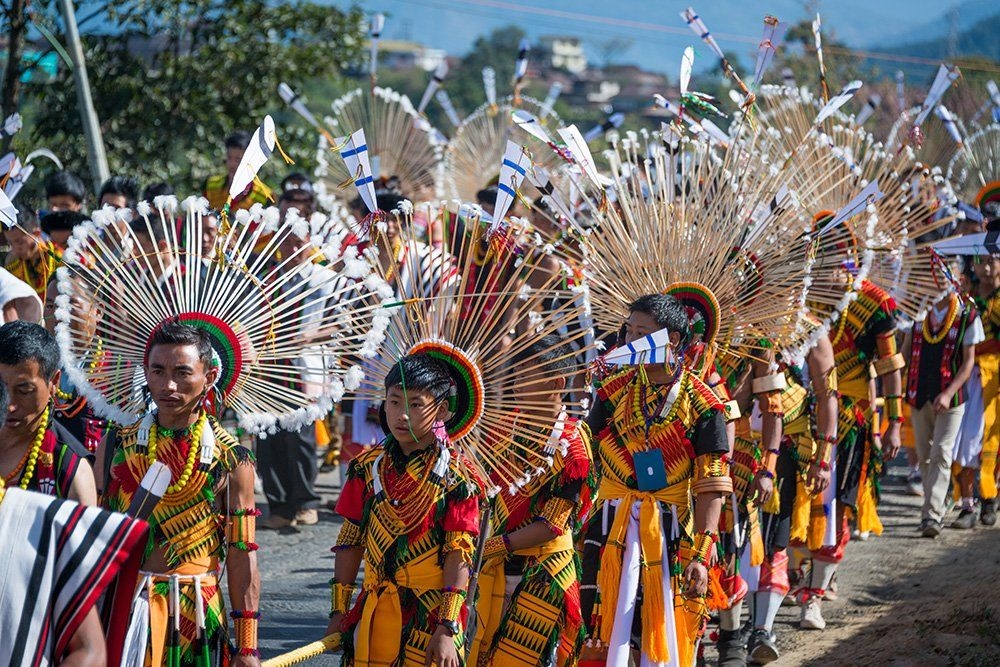What is a Tribe and the 4 C’s Identification
08 Dec 2022 19:10:43

When the invaders came to India, they called the various Indigenous peoples as Tribes. The term “Tribe” was used by foreign colonisers. Our history and Puranas also mention similar words such as Adivasis, Vanvasis & Attavyas and so on. The term “Tribe” is not mentioned anywhere clearly.
Our Indian constitution has not exclusively drawn any criteria to identify ‘Tribe’. But the constitution has defined the Scheduled Tribes in Article 366 (25) as “scheduled tribe means such tribes or tribal communities or part of group with in such tribes or tribal communities as are deemed under Article 342 to be scheduled tribes for the purpose of this constitution”
Various dictionaries give different definitions for Tribe. According to Cambridge dictionary, a group of people, often of related families, who live together, sharing the same language, culture, and history, especially those who do not live in towns or cities. Whereas for Oxford Dictionary of sociology 'tribe' is a social group bound together by kin and duly associated with a particular territory; members of the tribe share the social cohesion and associated with the family together with the sense of political autonomy of the nation.
According to Britanica Encyclopaedia tribe, in anthropology, a notional form of human social organization based on a set of smaller groups (known as bands), having temporary or permanent political integration, and defined by traditions of common descent, language, culture, and ideology. Dictionaries define the purpose of Anthropology which will be having conflict with legalistic usage.
From all these universal definitions there are some common consensus like culture, language, cohesion and tradition. There is no universally accepted criteria for defining tribe by social scientists. When we consider the Indian complex scenario of vastly diversified culture to define any of the ethnic groups especially for the legal purposes many parameters to be considered.
In the first backward class commission was set up in 1953, the in the preamble of their questionnaire about the ST observed as “The Scheduled Tribes can also be generally ascertained by the fact that they live apart in hills, and even where they live on the plains, they lead a separate, excluded existence, .and are not fully assimilated in the main body, of the people.: Scheduled Tribes may belong to any religion. They are-listed as Scheduled Tribes because of the kind of life led by them.”
In the BN Lokur Advisory committee report of 1965 on Scheduled Caste and scheduled tribe list for revision they have considered and observed slightly diffrently as “indications of primitive traits, distinctive culture, geographical isolation, shyness of contact with the community at large and backwardness; we have considered that tribes whose members have by and large mixed up with the general population are not eligible to be in the list of Scheduled Tribes”
As we consider all these factors, we can Identify and classify a tribe or a tribal community with Four C’s (4C’s) Characteristic Litmus test to understand the Kind of life they lead by, which are of Character, Culture, Custom and Cult. ‘Character’ denotes social cohesion, introvertness, type of Weapon they commonly used (Axe, Archery, sword) preference of living locations (Hills, River Banks or Gypsy) type/ dependency of livelihood (Hunting forest dwelling, agriculture) etc. Other 3 “C” are closely intertwined with each other but are also quite distinct.
‘Culture’ is the Language, dialect, dressing, foods, songs, festival and dances of each community. ‘Custom’ is the law they follow in the society, in the marriage, succession, selection/ election of chief in the society, decision making etc. ‘Cult’ is what decides the faith, way of worship, deities, rituals, gods & goddesses, various pooja (prayer) & activities conducted on each customary occasion, like poojas & prayer songs to be conducted on various occasions from birth to death. These all characteristics together identify a tribe community and further a sub group inside a specific tribe.
The Character of the Tribes which lets them enjoy the type of traditional territorial freedom and rights on the forest was always suppressed and they were branded as fugitives since the history of Samrat Ashoka to British India. But ancient history of Ramayana and Mahabharatha shows that Tribe’s freedom or rights were never questioned and were instead, respected.
Outlook of Character of the community changes to an extent after they attain education, due to the influence of technology and the influence of law of the land. Culture also will be having influence on the development of the society, but traditions are always a matter of pride to the community and part of its identity, so traditions will always be maintained. Customs are the law, which influences the law of the land and a certain level of reformation always happens. With the influence of Social reformers and Gurus the customary laws and cult always reforms for the society’s advancement.
The Last “C”, Cult, seems insignificant but it is having a crucial role to identify the identity of a community. As said earlier the cult is connected with Faith. As the faith changes, the entire lifestyle of a tribe gets changed and that in turn changes the identity of the community itself. As the tribes were depending on nature they were worshiping the various deities associated with nature, but as the faith changes, their worship and respect for nature and its gods, all fades away. All the practices and traditions from birth to death will change, which will also completely change the culture and customs.
Hence identifying the importance of the Cult which governs and influences all other characteristics of a community to identify or to define the tribe or tribal groups. The 4 C’s should be considered while identifying the tribes to include and exclude them from Scheduled lists.
Article by - Adv. Shine P Sasidhar